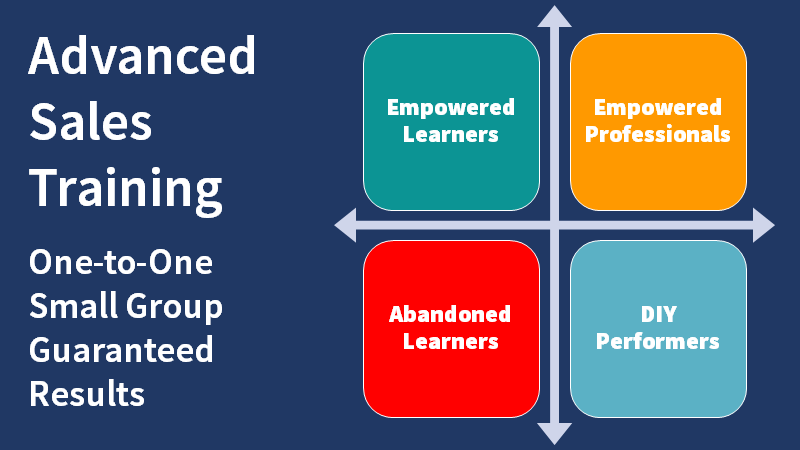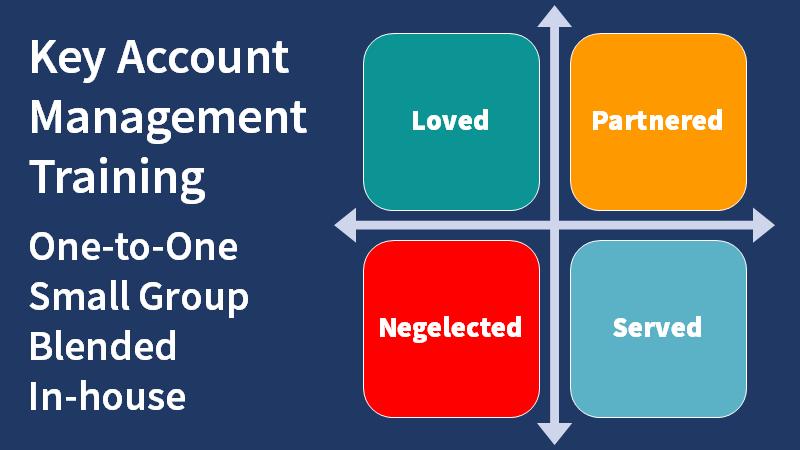Quantifying the time saved value of what you sell.

Time is the most precious thing any of us have. What we do with it determines everything else in our lives. Time saved makes all the difference.
Do you communicate the time saved value of what you sell?
Here are some SalesSense examples that illustrate the time value of what we sell:
1. Optimising, documenting, and teaching a sales process saves time by:
- Shortening sales cycles.
- Improving opportunity qualification.
- Helping new salespeople become productive.
- Reducing the time managers spend giving directions and fixing problems.
2. Setting up a competency programme saves time by:
- Reducing the training people need.
- Reducing the need for supervision and coaching.
- Makes appraisals and reviews less demanding.
3. Conducting deal reviews and clinics saves time by:
- Shortening sales cycles.
- Reducing time spent selling to customers who don't buy.
- Increasing sales opportunity conversion rates.
- Freeing managers for higher priority tasks.
4. Conducting one-to-one coaching saves time by:
- Providing efficient and timely learning and development.
- Resolving performance issues.
- Reducing staff turnover.
5. Co-creation training saves time by:
- Increasing morale and motivation.
- Improving productivity and results.
- Increasing the average yield per salesperson.
Overall Potential Time Savings:
- Up to 20% of the average time it takes to win a sale.
- Up to 25% of onboarding training costs.
- Up to 30% reduction in the time for a new hire to become productive.
- Up to 50% of the time taken to find and hire replacements.
Can you develop credible examples for what you sell?
For each of the customer problems or issues that your offerings address:
How does it save customers' time?
- Can you quantify the amount of time saved?
- What evidence can you provide?
- Add a TIME SAVED section to the table that you started.
- Share your proof or calculation in the comments or send it to me for feedback:
Free B2B Sales Training Course Index
Strategies for Self-Teaching
Set clear objectives: Begin by establishing specific and realistic learning objectives. Clearly define what you aim to learn or achieve through self-study. This will help you stay focused and motivated throughout your educational journey.
Develop a comprehensive plan: Formulate a detailed learning plan that outlines the subjects or skills you need to master, along with a timeline for each. Break down the content into manageable sections and set milestones to monitor your progress.
Collect reliable resources: Identify and gather reliable learning resources that align with your objectives. These might include books, online courses, tutorials, videos, podcasts, or reputable websites. Use a variety of resources to gain multiple perspectives and insights into the subject matter.
Create a consistent study routine: Consistency is vital for self-teaching success. Allocate specific times in your schedule for learning and adhere to them. Whether you dedicate a few minutes each day or longer sessions a few times per week, establish a routine that suits your lifestyle.
Engage in active learning: Apply active learning strategies to deepen your understanding and retention. Take detailed notes, summarise key ideas in your own words, and create flashcards or concept maps. Practically apply what you learn through exercises, projects, or real-world scenarios.
Seek feedback and assessment: Look for opportunities to obtain feedback on your progress and performance. This could come from peers, mentors, or online communities related to your area of study. Feedback helps you pinpoint areas for improvement and solidify your knowledge.
Maintain motivation and discipline: Self-teaching requires a strong sense of discipline and motivation. Find ways to stay encouraged, such as connecting with like-minded individuals, joining online forums or study groups, or visually tracking your progress. Celebrate achievements to keep your motivation levels high.
Adopt a growth mindset: Cultivate a growth mindset that views challenges, setbacks, and mistakes as opportunities for learning and improvement. See self-teaching as a continuous journey of growth, embracing the learning curve with patience and resilience.
Reflect and adapt: Regularly reflect on your learning experience. Evaluate which methods or resources have been most effective for you and make adjustments as necessary. Be open to experimenting with different strategies or seeking additional help if you encounter obstacles.
Stay curious and pursue lifelong learning: Foster a lifelong passion for learning. Embrace curiosity and explore new subjects or skills beyond your initial goals. Self-teaching can evolve into an ongoing pursuit of personal and professional growth, enriching your life in countless ways.
Have us help you achieve learning momentum. Join our new scheduled one-hour-a-week professional sales career training course.
If you have the discipline of an autodidact, use our self-led B2B sales training course. See the index here. This page presents 2.33, about ways to quantify the time saved value of what you sell. If you need more, have any of our B2B sales training courses or any element or any combination of elements delivered for groups or individuals through online sales training sessions or one-to-one coaching. Call +44 (0)1392 851500 or email jimm@salessense.co.uk for details.












